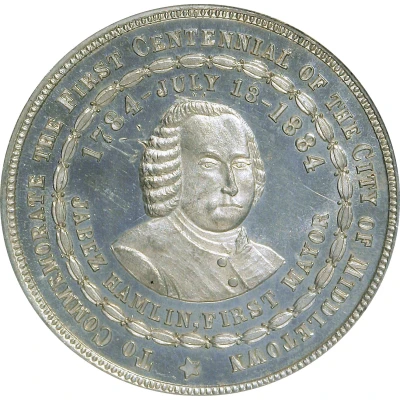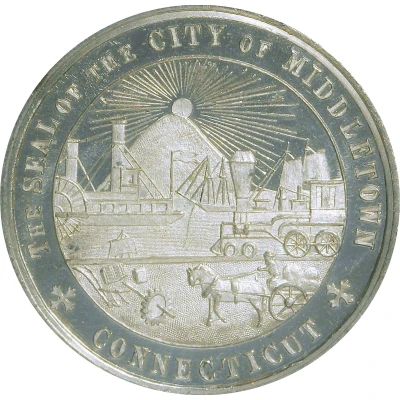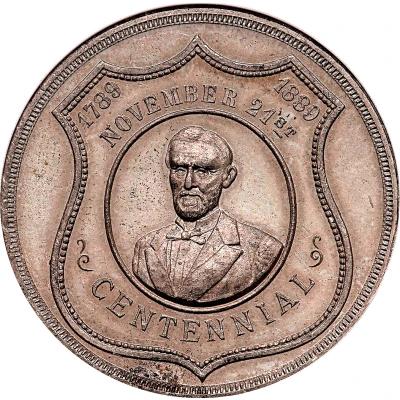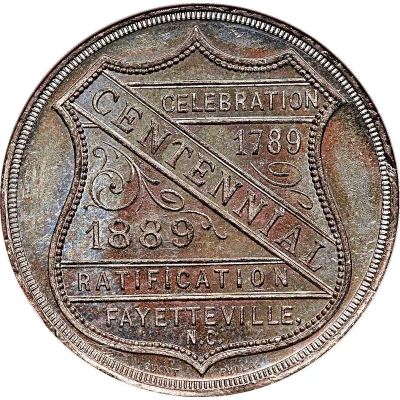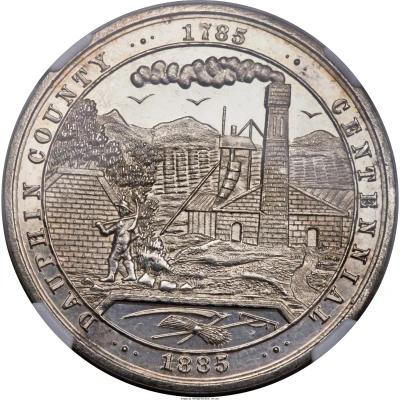
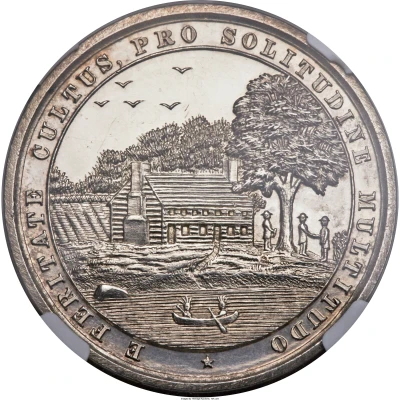

Obverse © Heritage Auctions Europe – Reverse © Heritage Auctions
Dollar - Dauphin County Pennsylvania Centennial Medal
1885 year| Silver | - | - |
| Location | United States |
|---|---|
| Type | › Tokens |
| Year | 1885 |
| Currency | United States - So-called Dollars |
| Composition | Silver |
| Shape | Round |
| Technique | Milled |
| Updated | 2024-11-14 |
| Numista | N#123433 |
|---|---|
| Rarity index | 100% |
Reverse
John Harris Log Cabin
Script: Latin
Lettering: E Feritate Cultus Pro Solitudine Multit
Engraver: William Barber
Comment
1885 Dauphin County, Pennsylvania Centennial Medal, Silver, HK-Unlisted, Raymond-154. MS63 Deep Prooflike NGC. The Dauphin County, Pennsylvania Centennial Medal was struck in white metal, bronze, and silver, with mintages ranging from 2,000 pieces in white metal to only 200 bronze medals. Silver examples are very rare, with just 50 pieces struck and perhaps as few as nine pieces actually sold. Pennsylvania pioneer John Harris is commemorated on the reverse by his handsome log cabin, while the obverse depicts the three great industries of Dauphin County -- mining, manufacturing, and agriculture. It is believed the white metal and bronze pieces were manufactured by Peter L. Krider of Philadelphia, since P.L. KRIDER PHILA. appears on those medals in a panel beneath mining motif. The silver pieces do not show the Krider imprint, since they were likely struck at the Philadelphia Mint. Some researchers believe Chief Engraver William Barber cut the dies based on similarities to his So-Called dollar designs for Nevada and the Centennial Exposition (HK-19 and HK-20). This silver example is surely one of the finest known, with brilliant and deeply mirrored fields contrasting with frosted raised devices. A few thin, minor marks are noted in the fields. Lettering appears on this Select example, finely done, with the name THEODORE D. GREENWALT. His story is an interesting sidebar, although unrelated to the striking of the medal.Major Greenwalt was one of eight Union Paymasters joined by eight pay clerks and an escort of 31 soldiers assigned to guard the transport of payroll aboard the steamer Ruth, which caught fire and sank on the Mississippi River near Cairo, Illinois on the night of August 4, 1863. A suspected Confederate incendiary device set fire to the vessel, with the loss of 26 lives and $2.6 million of Union Army payroll. A Military Board of Inquiry later ruled it was an act of sabotage. By good fortune, Major Greenwalt was temporarily ashore when the Ruth went down.
Price
| Date | Mintage | VG | F | VF | XF | AU | UNC |
|---|---|---|---|---|---|---|---|
| 1885 | 50 | - | - | - | - | - | - |
Values in the table are based on evaluations by sales realized on Internet platforms. They serve as an indication only for Dollar - Dauphin County Pennsylvania Centennial Medal 1885 item.
